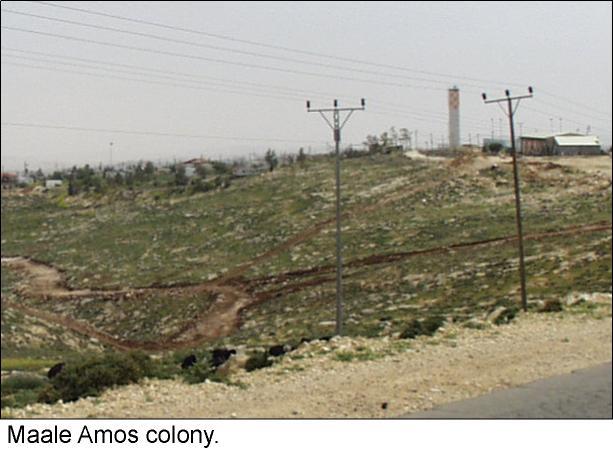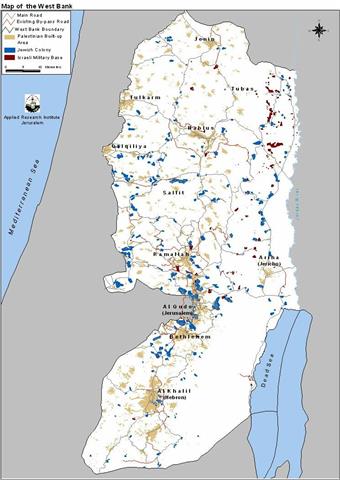Kisan, a small village in the Bethlehem district, is located about nine kilometers from the southeastern part of Bethlehem City and embraces a built-up area of 52 dunums. Its population is around 500 people, most of them (80%) are farmers depending on raising livestock and agriculture, and the others (20%) are laborers. In Kisan there are about 3000 heads of sheep and goats. In the village there is a water network, a recently installed electricity network and one elementary school.
After the 1967-war, Kisan was exposed to Israeli colonization activities. Today the village is still threatened by the expansion of settlements. Part of their agricultural land is confiscated and many houses have been demolished. The head of Kisan's village council, Mohammed Al-'Biat, informed the ARIJ investigating team that in 1988 the village suffered from the Israeli policy of house demolitions. In total, thirty houses were demolished. The official reason, according to the Israelis, was that the region is a closed military area. However it is hard to believe this logic and it is closer to the truth that they demolished the houses to make room for the expansion of the Israeli settlements surrounding the village.
About one kilometer south of the Kisan village is an Israeli settlement called Ma'ale Amos, one of the 27 settlements in Bethlehem district. This settlement was established in 1981 on Al-Ta'amra lands. In the beginning, the status of this settlement was announced as temporary, but it kept expanding and now it is permanent. It has an urban area of 268 dunums with a population of about 400. (See photo)
The expansion of Jewish settlements, including Ma'ale Amos, in the West Bank continues. On the 28th of May this year, 200 dunums of Kisan lands (see map) that used to be for agricultural and grazing purposes were seized by Israeli authorities. Mohammed Al-'Biat noted that about 620 dunums are being used for colonial construction and more than 2000 dunums are threatened. The agricultural areas are cultivated with wheat and olives (see photo). The owners of these lands are the Al-'Biat and Al-rashaida families. They were informed of the Israeli plans and naturally they disapproved it because these agriculture areas constituted the main source of income, not just for the owners but for 80% of the village inhabitants. Their protest proved to be fruitless. Instead, settlers beat protesting villagers, especially shepherds and farmers who were using the land, with the assistance of Israeli security forces. Ultimately the villagers were displaced from their lands.
That's not all. About 380 meters southwest of Kisan village is a military base with an area of 34 dunums (see photo). Recently Israeli authorities converted this base into a civilian settlement. This outpost, Ivei Ha'nachal, was one of the 42 outposts that the Barak government addressed in October 1999. Ivei Ha'nachal, along with scores of other outposts, has been approved (the Israeli authorities say 'legalized') and now enjoy formal recognition by the Israeli government (see map). The land seized from Kisan village is close to this ex-military base turned into an urban settlement. This development suggest that in the future Israeli authorities plan to connect Ma'ale Amos, which is only 700 meters away, with the new settlement to create one large settlement (see map).
Ma'ale Amos and its new expansion are situated in a Area 'C' which in turn lies between the Nature Reserves and Area 'B'. The fact that the Israeli authorities are allowing this expansion shows an underlying intent at keeping the West Bank areas separate and disconnected. Expanding settlements while the final status negotiations are going on is another indicator of Israel's lack of seriousness vis-Ã -vis the peace process.
Prepared by:
The Applied Research Institute – Jerusalem


















